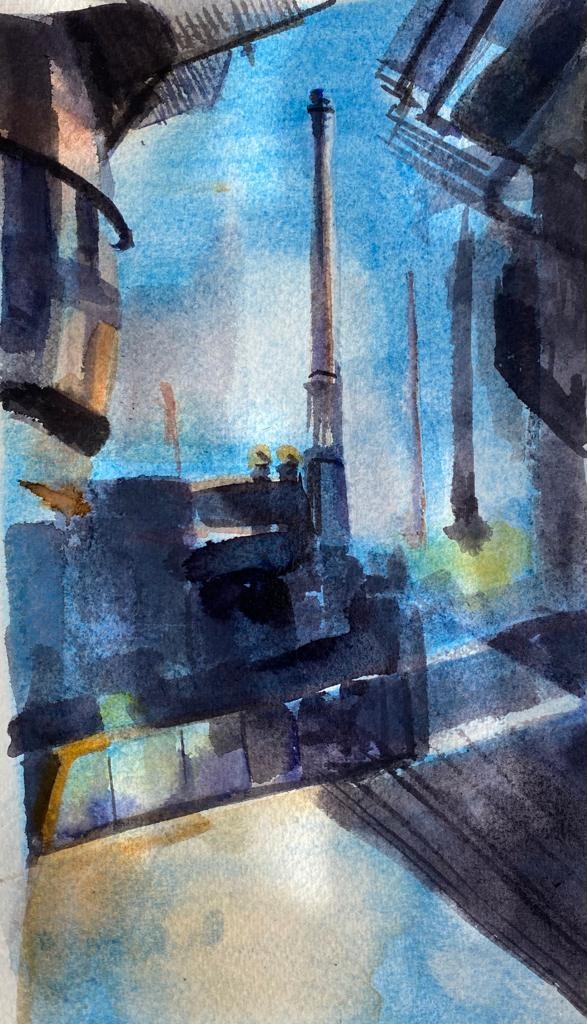What do you do with a redundant steel mill and its blast furnaces, cranes and contamination? Level the land, cap the toxins and build new, erasing the memories of an industrial heritage that defined generations?
Or repurpose symbols of a manufacturing past as memorials in a low-carbon future?
At the Landschaftspark (landscape park) in Duisburg-Nord in the Ruhr Valley they’ve kept much of the former Thyssen steel works, abandoned in 1985, now transformed into a recreation and adventure centre.
You can climb to the top of the blast furnace (no hard hat needed), scuba dive in the old gasometer in Europe’s biggest indoor diving tank, clamber up concrete climbing walls, watch a nightly lightshow or simply walk around the massive structures and imagine the heat, smoke, and hot, hard labour.
It all started with Seattle’s Gas Works Park on the north shore of Lake Union on the US north-west coast. Some of the gas storage tanks and related structures are retained and the capped contaminated soil now forms a large mound, providing views of the city and raked seating for audiences at open air concerts.
The once mighty Bethlehem Steel Corporation, founded in Lehigh Valley, Pennsylvania, USA in 1857, closed its huge site in 1995. Like the Landschaftpark, part of the original steel works became the SteelStacks Arts + Cultural Campus, providing a civic “memory journey” and opportunity to climb over the industrial workings.
In Seoul, South Korea, an old oil depot is now the Oil Tank Culture Park with the disused tanks used as art galleries and event spaces. The rest of the site provides space for recreation and sports.
Long-lived
Big, long-lived industrial sites, such as steelworks, defined the communities that provided labour and services. The landscape architects leading their repurposing speak of their mission to create a place that meets the demands of the present while preserving the collective memory of the communities.
The parks are not museums or restored historic sites that painstakingly preserve the past. To be successful, the places must meet the community’s current needs while protecting visitors from widespread soil and water contamination.
Things are moved around and the redeveloped site, while retaining and memorializing some of the industrial architecture, is remodelled for practicality and aesthetics, including planting trees for shade and clearing spaces for public events.
A contaminated sluice that ran through the Duisburg site was covered and replaced by a new canal fed with rainwater. Part of the rail line was repositioned and 49 massive steel plates that lined a furnace were laid out as tiles on the ground of a new performance area, called the Piazza Metallica. Despite the changes, Peter and Annaliese Platz, the Landschaftpark architects, say they wanted to retain enough memory joggers so that a grandfather could show his grandchildren around and describe how the place once worked.
Adaptation
As we adapt to global warming and move from sunset to sunrise industries (windmills, solar panels, clean manufacturing…), the temptation is to bury and forget our dirty past — structures and memories. But to fully appreciate the new, it is argued, we need constant reminders of the old.
And herein lies the problem with super-curated landscaped parks that attempt to memorialise the heat, smoke and spectacular carbon emissions of the past. Yes, memory is stimulated by industrial shapes, like preserved blast furnaces and labyrinthine pipework. But to be relevant and functional today, the sites must be cleansed of their gritty past: sanitised and adorned with horticultural diversity. Inevitably, the parks become like a Legoland: using the blocks of the past, but not necessarily in the same order.
The practice of providing memory reminders, like repositioned rail furniture or dislocated steel plates, is defended by designers because, they say, it helps us better understand the present. Maybe.
But perhaps the architects are too caught up in their legitimising narrative. These parks are primarily stages and sets for communities to have fun. It’s highly unlikely that the grandfather’s great grandchildren will get the references without him to explain.
With grandpa gone, so are the memories.
